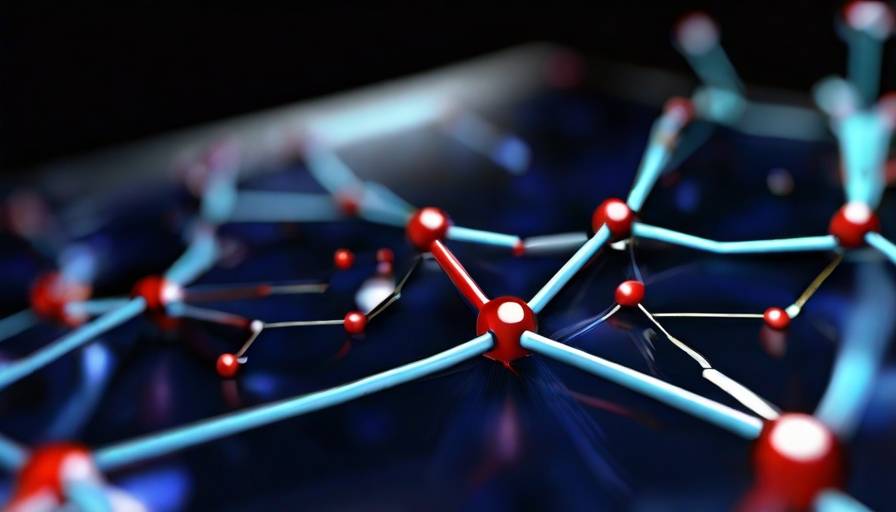Researchers from the Norwegian University of Science and Technology (NTNU) have made a significant breakthrough in computational chemistry by developing a method that can speed up chemical reaction calculations by 30-40 times. This development has the potential to revolutionize the chemical industry and make previously impractical or impossible calculations feasible.
Complex calculations involving chemical reactions, protein folding, and phase transitions often require a significant amount of time, even with today’s powerful computers. These calculations are crucial for industries such as the chemical sector, but their lengthy processing times can be a major hindrance.
Professor Titus van Erp and his research group at NTNU’s Department of Chemistry have found a solution to this problem. By connecting 20 computers to work together and modifying the algorithms to optimize data exchange between the machines, they have dramatically reduced the time needed for these calculations.
“A calculation that previously took one year can now be done in ten days,” says Professor van Erp. “We have managed to increase the calculation speed of chemical reactions by 30-40 times.”
The key to this improvement lies in the way the computers communicate with each other. In traditional networked computing, computers often spend a significant amount of time waiting for each other to complete their tasks. The NTNU researchers have eliminated this waiting time by modifying the algorithms, allowing the computers to work actively for a much greater portion of the time.
This breakthrough comes at a critical time when current computer technology is reaching its limits, and the speed of advancement is slowing down. The results of this study, published in the Proceedings of the National Academies of Science (PNAS), demonstrate the importance and necessity of such innovations.
The research group, led by Professor van Erp, also included lead authors Daniel T. Zhang and Lukas Baldauf, Anders Lervik from NTNU’s Department of Chemistry, and Sander Roet from Utrecht University, who was a PhD student at NTNU during the experiments.
See original
Connecting computers so they can think faster
We are used to computers getting faster and faster, but complicated calculations involving lots of data can take a very long time, even today.
This applies to calculations of chemical reactions, how proteins assume different three-dimensional forms and so-called phase transitions, where one chemical substance transitions from one state to another, such as from solid to liquid form.
These types of results are often very important – for example, in the chemical industry.
Down from one year to ten days
These complicated calculations can take years to perform, and access to the most powerful computers is limited. How nice would it be if someone could make the calculations faster? Maybe a lot faster? And using existing equipment?
“We have managed to increase the calculation speed of chemical reactions by 30-40 times,” says Titus van Erp, a professor at the Norwegian University of Science and Technology (NTNU’s) Department of Chemistry. If sufficient computing resources are available, the speed can be increased even more.
Van Erp headed the research group that performed this study, but what does it mean in practice?
“A calculation that previously took one year can now be done in ten days,” says the professor.
The example in question concerned a calculation of how water molecules are split into hydrogen and oxygen.
This also means that the researchers can now perform computer calculations that would previously have been impractical and perhaps impossible to carry out. The results have been published in PNAS, the Proceedings of the National Academies of Science.
Connected computers are smarter
So how have they done this?
“We connected 20 computers that could work together to perform the calculations,” says van Erp.
Connecting computers together is nothing new, but the way the researchers did this is completely different from what others have done.
“We modified the algorithms, which optimized the exchange of data between the machines,” van Erp said.
Because the computers could work actively much more of the time, there was much less delay during the calculations.
The computers don’t have to wait
“Previously, connected computers spent a lot of time waiting for each other. One computer in a network has had to wait for calculations being performed by another computer in the network, but they don’t have to do that in our method,” says van Erp.
This is especially important at a time when current computer technology is starting to reach a limit. The increase in speed is no longer as fast as it was a few years ago and results like this are, therefore, important, necessary and encouraging.
The research group further consisted of lead authors Daniel T. Zhang and Lukas Baldauf, and Anders Lervik from the Department of Chemistry at NTNU, as well as Sander Roet from Utrecht University, who was a PhD student at NTNU when they carried out the experiments.
Reference: Daniel T. Zhang, Lukas Baldauf, Sander Roet, Anders Lervik and Titus S. van Erp. Highly parallelizable path sampling with minimal rejections using asynchronous replica exchange and infinite swaps. PNAS. 5 February, 2024. https://doi.org/10.1073/pnas.231873112

